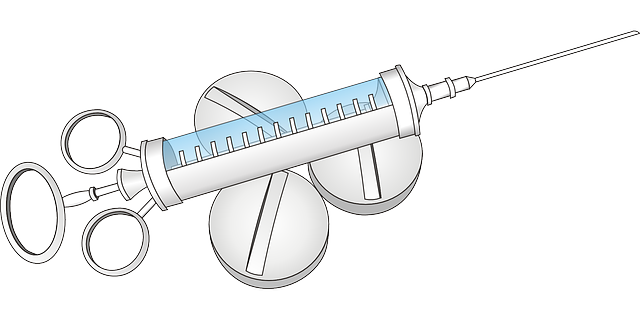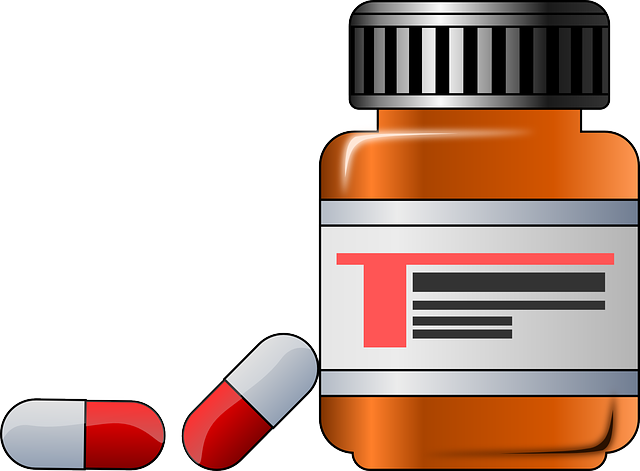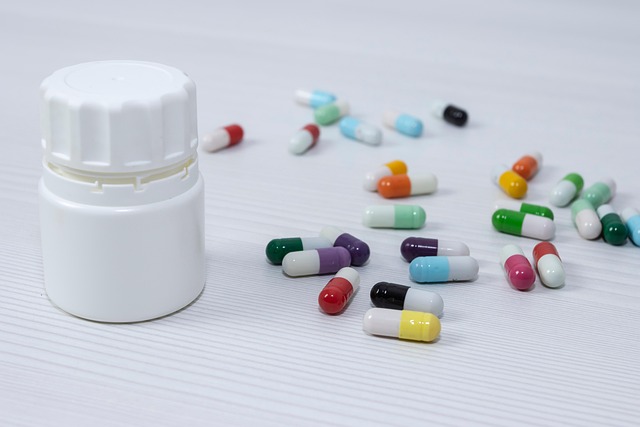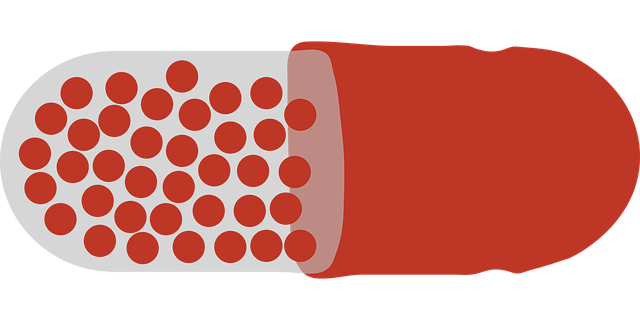GLP-1 drugs are revolutionary medications for diabetes management, offering a dual benefit of lowering blood sugar and aiding weight loss by mimicking natural gut hormones. These drugs enhance insulin secretion and reduce glucagon release, improving glycemic control. They also slow gastric emptying, leading to reduced appetite. GLP-1 receptor agonists, a cutting-edge class, provide substantial advantages in type 2 diabetes treatment, especially for those with weight issues. By mimicking natural hormones, these drugs ensure better blood sugar control and minimize hypoglycemia risks. They improve cardiovascular health, reduce side effects, and offer a more natural alternative to traditional insulin therapy, transforming diabetes management into a holistic, personalized approach.
GLP-1 receptor agonists, or GLP-1 drugs, have emerged as powerful tools in diabetes management. This article delves into the science behind these innovative medications and explores their multifaceted benefits. From improving blood sugar control to aiding weight loss and enhancing insulin secretion, GLP-1 drugs offer a comprehensive approach to treating diabetes. We’ll examine their role in reducing hypoglycemia, integrating with lifestyle changes, and their promising future in personalized medicine, making them a game-changer in diabetes care.
Understanding GLP-1 Receptor Agonists: The Science Behind the Drugs

How GLP-1 Drugs Work in Diabetes Management

GLP-1 drugs work by mimicking the effects of the natural hormone glucagon-like peptide-1 (GLP-1), which is produced in the gut in response to food intake. This hormone plays a crucial role in regulating blood sugar levels by stimulating insulin release from the pancreas when needed, and suppressing the production of glucagon, a hormone that raises blood sugar.
By activating GLP-1 receptors in the body, these drugs enhance insulin secretion in a glucose-dependent manner, meaning they promote insulin release only when blood sugar levels are high, thereby improving glycemic control. Additionally, they slow gastric emptying, leading to a feeling of fullness and reduced appetite, which can aid in weight management—a significant benefit for individuals with type 2 diabetes who often struggle with obesity.
Improving Blood Sugar Control: A Key Advantage

GLP-1 receptor agonists, a class of drugs designed to mimic the effects of the natural hormone GLP-1, offer a significant advantage in diabetes management by improving blood sugar control. These medications stimulate insulin secretion in a glucose-dependent manner, meaning they promote insulin release only when blood sugar levels are high, thus helping to maintain stable and healthy glucose levels. This key benefit not only facilitates better glycemic control but also reduces the risk of hypoglycemia, a common side effect of other diabetes treatments.
By enhancing insulin secretion, GLP-1 drugs facilitate efficient glucose uptake by cells, leading to lowered blood sugar. Additionally, they suppress glucagon release, a hormone that raises blood sugar. This dual action makes them highly effective in managing type 2 diabetes and, in some cases, helping individuals with type 1 diabetes achieve better control. The improved blood sugar regulation offered by these drugs is a significant step forward in diabetes treatment, contributing to overall health and well-being for those living with this chronic condition.
Weight Loss Benefits: Unlocking a Common Challenge in Diabetes Care

GLP-1 receptor agonists, a class of drugs that mimic the effects of the gut hormone GLP-1, offer significant weight loss benefits, addressing a common challenge in diabetes care. By enhancing feelings of fullness and reducing appetite, these agonists help individuals achieve a healthier body weight. This is particularly beneficial for diabetics, as obesity often complicates blood sugar management. Not only do GLP-1 drugs assist in weight reduction, but they also improve insulin sensitivity, leading to better glycemic control.
This dual action makes them a valuable tool in the diabetes arsenal. Through these mechanisms, GLP-1 receptor agonists contribute to overall metabolic health, offering a more comprehensive approach to managing both diabetes and associated weight issues.
Reducing Hypoglycemia: Enhancing Patient Safety

GLP-1 receptor agonists, a class of drugs that mimic the effects of the natural hormone GLP-1, play a significant role in diabetes management by reducing hypoglycemia, thereby enhancing patient safety. These drugs stimulate insulin secretion in a glucose-dependent manner, which helps to maintain stable blood sugar levels and minimizes the risk of low blood sugar episodes. This is particularly beneficial for diabetic patients, as hypoglycemia can lead to severe health complications and even loss of consciousness.
By promoting a more balanced insulin response, GLP-1 drugs help prevent sudden drops in blood glucose. They do this by enhancing the body’s ability to regulate insulin production based on real-time glucose levels, which is especially crucial during periods of physical activity or after meals when blood sugar can fluctuate significantly. This precise control contributes to improved overall glycemic management and reduces the need for frequent monitoring and adjustments, thereby improving patient quality of life.
Enhanced Insulin Secretion: Optimizing Pancreatic Function

GLP-1 receptor agonists, a class of drugs designed to mimic the effects of the natural hormone GLP-1, offer significant benefits in diabetes management by primarily enhancing insulin secretion and optimizing pancreatic function. These medications stimulate the pancreas to produce and release insulin in a glucose-dependent manner, ensuring that blood sugar levels are regulated more effectively. This mechanism is particularly advantageous for individuals with type 2 diabetes who may have developed insulin resistance or inadequate insulin production over time.
By promoting healthier pancreatic function, GLP-1 drugs can improve overall insulin sensitivity, leading to better glycemic control. They do this by enhancing the responsiveness of beta cells in the pancreas to glucose stimuli, thereby increasing insulin output when blood sugar is high and reducing excessive insulin secretion when it’s low, which helps prevent hypoglycemia. This balanced approach to insulin regulation makes GLP-1 drugs a valuable tool in managing diabetes effectively while minimizing potential side effects associated with other treatments.
Cardiovascular Benefits: An Important Aspect of Diabetes Treatment

Diabetes management often involves a multifaceted approach, and one critical component is addressing cardiovascular health. GLP-1 receptor agonists, a class of drugs that mimic the effects of the natural hormone GLP-1, offer significant cardiovascular benefits in addition to their role in blood sugar control. These advantages include improved heart function, reduced risk of cardiac events, and lowered blood pressure.
Research has shown that GLP-1 drugs can prevent or delay the progression of cardiovascular diseases, which are a leading cause of morbidity and mortality among diabetics. By promoting vasodilation and improving endothelial function, these agonists contribute to better overall circulation and heart health. This dual action—regulating blood sugar and supporting cardiovascular systems—makes GLP-1 receptor agonists valuable tools in the comprehensive treatment of diabetes.
Lifestyle Integration: Making GLP-1 Therapy Accessible

The integration of GLP-1 receptor agonists into daily life offers a promising approach to diabetes management, enhancing patient compliance and quality of life. These drugs, known for their efficacy in blood sugar control, provide a unique advantage by mimicking the body’s natural hormone, GLP-1. As a result, they offer a more natural and sustainable solution compared to traditional insulin therapy. By encouraging patients to incorporate these treatments seamlessly into their routines, healthcare professionals can promote better glycemic control.
Making GLP-1 drugs accessible involves creating awareness about their benefits, such as reduced side effects and improved patient satisfaction. Simplifying prescription processes and ensuring affordable access are crucial steps. Additionally, educating both patients and caregivers on the proper use of these medications can lead to better outcomes. This lifestyle integration approach not only enhances diabetes management but also paves the way for a more inclusive and effective healthcare system.
Future Prospects and Personalized Medicine in Diabetes Management

The future of diabetes management looks promising with the continuous evolution of treatments, including GLP-1 receptor agonists. As research progresses, one exciting prospect is the potential for personalized medicine approaches. This means tailoring treatments to an individual’s unique genetic makeup and metabolic profile. For instance, advancements in biotechnology may enable the development of targeted GLP-1 drugs that are more effective and have fewer side effects for specific patient groups. By understanding the intricate interplay between GLP-1 signaling pathways and various genetic factors, healthcare providers can offer highly customized care, enhancing overall glycemic control and improving patient quality of life.
Personalized medicine approaches in diabetes management hold the key to optimizing treatment outcomes. With further studies exploring the complex relationship between GLP-1 drugs and individual variations, it is anticipated that future treatments will be more precise and responsive to each patient’s needs. This shift towards personalized care has the potential to revolutionize diabetes management, ensuring that every patient receives an optimal therapy that considers their distinct characteristics.
